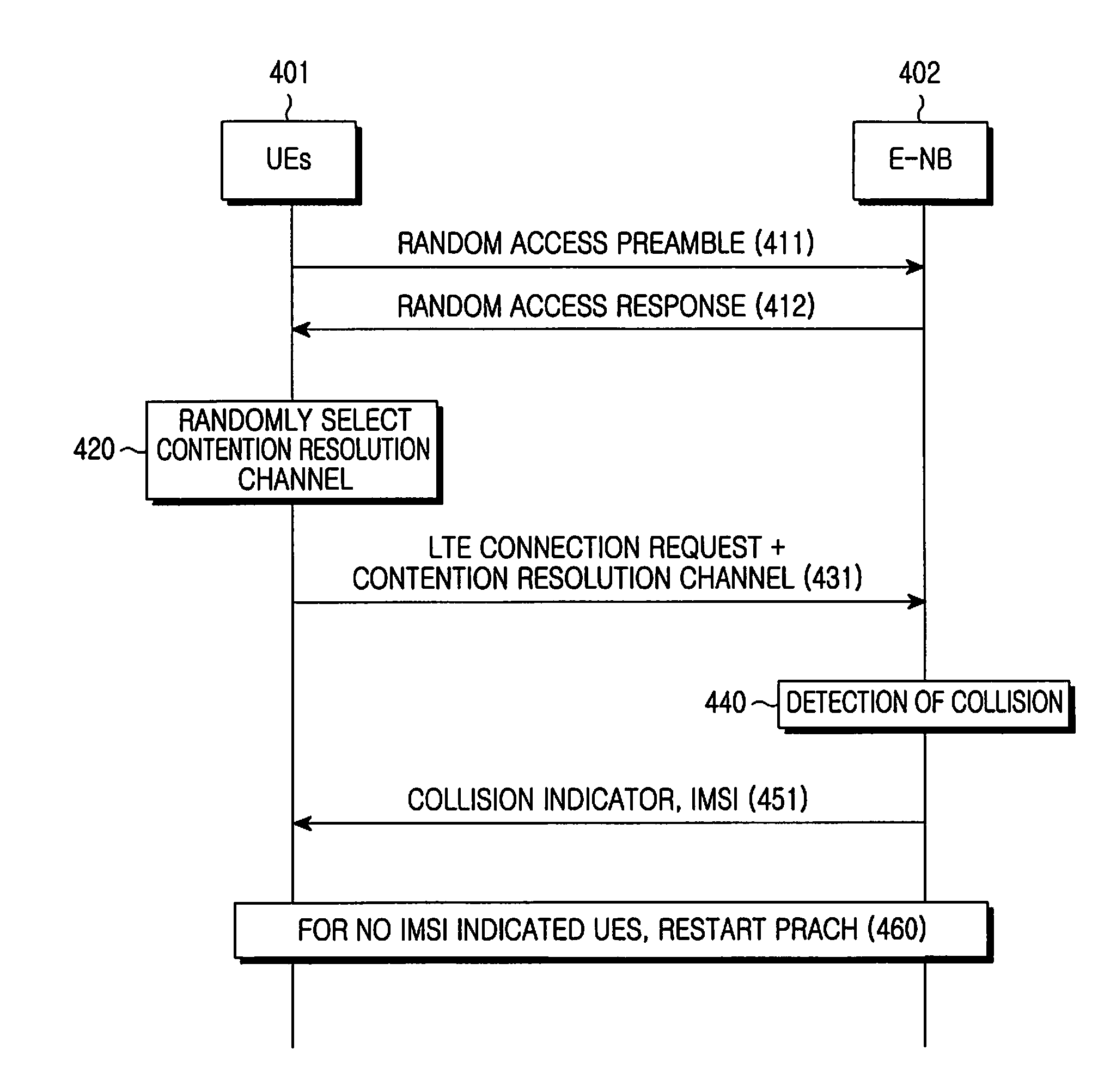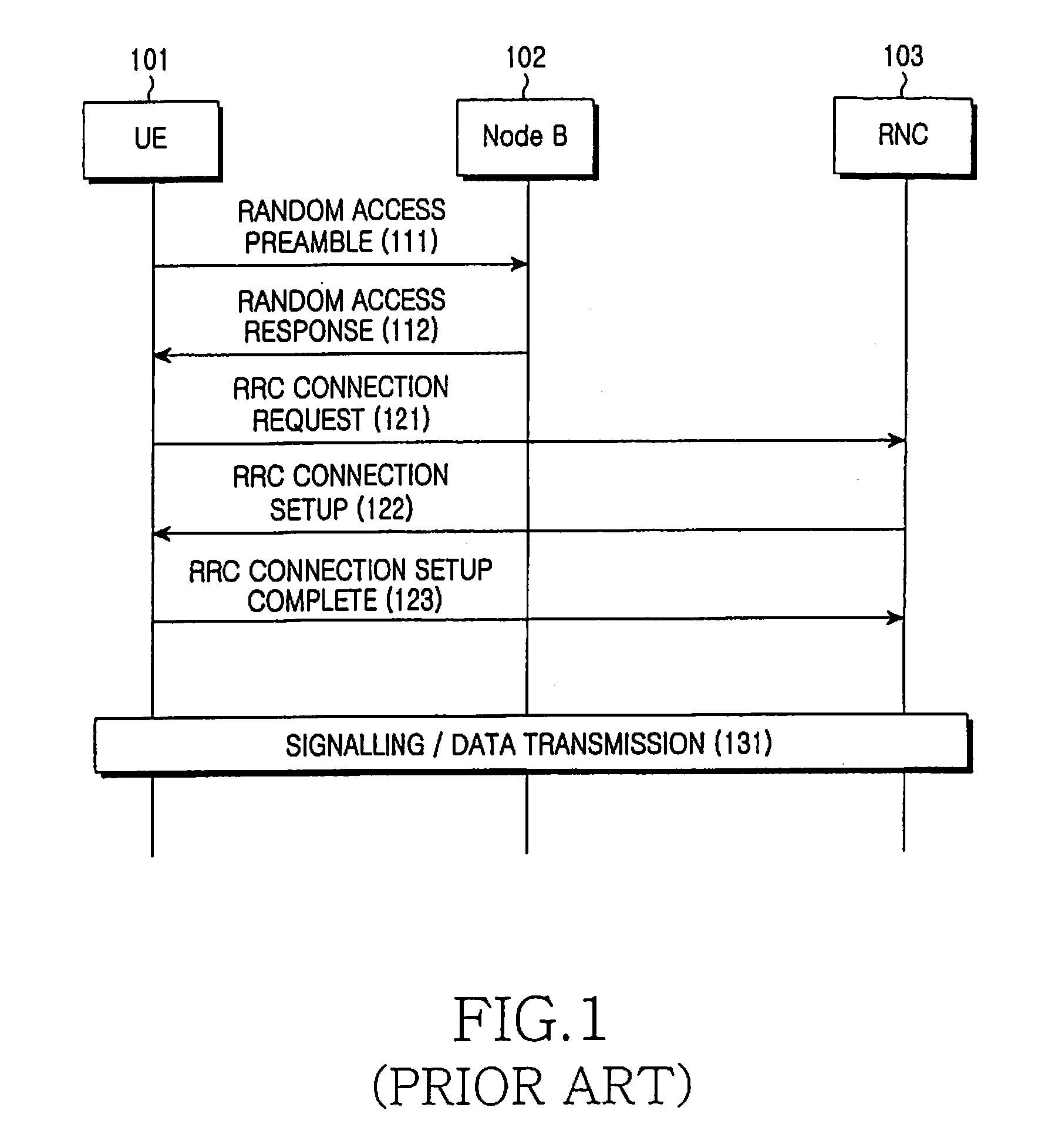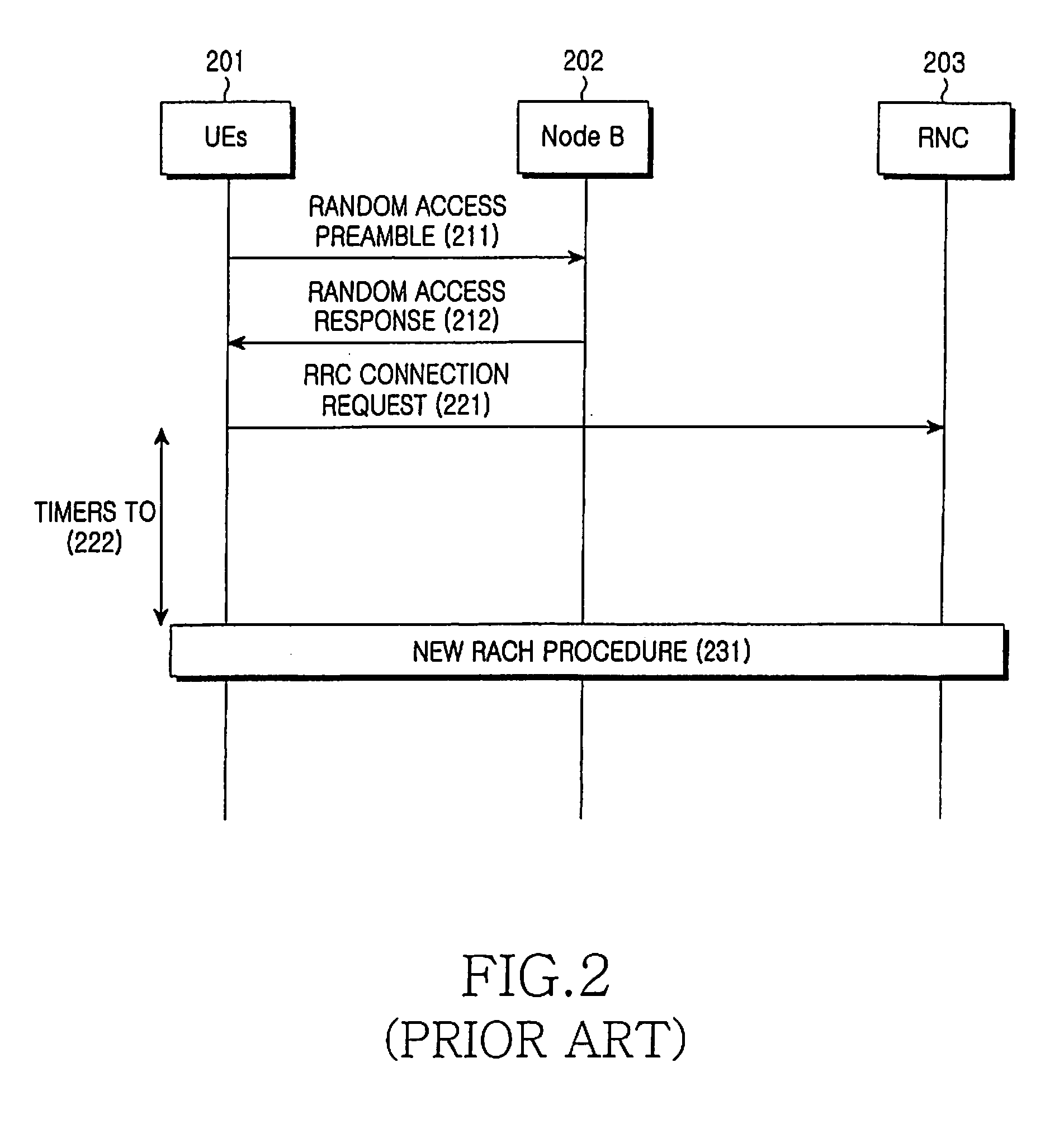Method and apparatus for transmitting/receiving rach
a random access channel and transmission method technology, applied in the field of methods and apparatus for transmitting/receiving random access channels (rach), can solve problems such as aconsiderable delay in initial access, and achieve the effect of reducing the delay
- Summary
- Abstract
- Description
- Claims
- Application Information
AI Technical Summary
Benefits of technology
Problems solved by technology
Method used
Image
Examples
embodiment 1-1
[0063]FIG. 9A is a diagram for a description of a CR channel generation method according to Embodiment 1-1 of the present invention.
[0064] Referring to FIG. 9A, a CR channel generator 911 and a data channel generator 912 generate a CR channel signal and a data channel signal, respectively, and a CR channel selector 916 randomly selects one of multiple CR channels. A CR channel generation method proposed by Embodiment 1-1 of the present invention transmits a signal only over the selected CR channel, and transmits no signal over the remaining CR channels (Discontinuous Transmission (DTX) signaling). This method is implemented by a switch 917. That is, a signal on the CR channel generated by the CR channel generator 911 is connected by the switch 917 to an input end of an FFT device 913, corresponding to a channel index selected by the CR channel selector 916, and no signal is input to input ends of the FFT device 913, corresponding to the remaining CR channels. Because the CR channel...
embodiment 1-2
[0065]FIG. 9B is a diagram for a description of a CR channel generation method according to Embodiment 1-2 of the present invention.
[0066] Referring to FIG. 9B, Embodiment 1-2 of the present invention is similar to Embodiment 1-1 of the present invention in that a CR channel signal and a data channel signal are input to the same FFT device 923, and undergo TDM in the time domain. The difference in the CR channel generation method between the two embodiments is as follows. While a signal with a predetermined value is generated only in the selected CR channel and then connected to an input end of the corresponding FFT device before being transmitted in Embodiment 1-1 of the present invention, each CR channel is composed of an orthogonal sequence and an orthogonal sequence corresponding to the selected CR channel is transmitted in Embodiment 1-2 of the present invention. For example, a Walsh code can be used as the orthogonal sequence.
[0067] If a CR channel selector 926 randomly sele...
embodiment 2-1
[0071]FIG. 10A is a diagram for a description of a CR channel generation method according to Embodiment 2-1 of the present invention.
[0072] Referring to FIG. 10A, a CR channel generator 1011 and a data channel generator 1012 generate a CR channel and a data channel, respectively, and a FFT device 1013 and an FFT device 1014 are FFT devices for the CR channel and the data channel, respectively. Embodiment 2-1 of the present invention different from Embodiment 1-1 in that the signals generated by the CR channel generator 1011 and the data channel generator 1012 are FFT-transformed by the separate FFT devices 1013 and 1014, respectively, and then input to a multiplexer 1015. Because the output signals of the two FFT devices 1013 and 1014 should be transmitted for different time intervals to maintain the SC-FDMA characteristic, a time index 1018 is input to the multiplexer 1015. The multiplexer 1015 selects one of the output signals of the FFT device 1013 and the FFT device 1014 accord...
PUM
 Login to View More
Login to View More Abstract
Description
Claims
Application Information
 Login to View More
Login to View More - R&D
- Intellectual Property
- Life Sciences
- Materials
- Tech Scout
- Unparalleled Data Quality
- Higher Quality Content
- 60% Fewer Hallucinations
Browse by: Latest US Patents, China's latest patents, Technical Efficacy Thesaurus, Application Domain, Technology Topic, Popular Technical Reports.
© 2025 PatSnap. All rights reserved.Legal|Privacy policy|Modern Slavery Act Transparency Statement|Sitemap|About US| Contact US: help@patsnap.com



